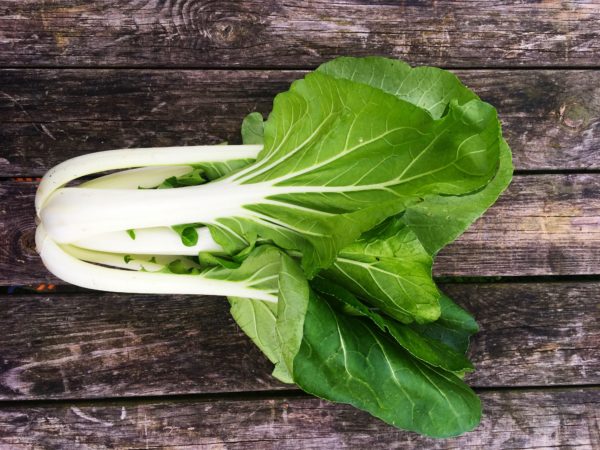
Pak choi, bok choy, pok choi or tatsoi are all a type of Chinese cabbage. This leafy green Chinese vegetable belongs to the cabbage family, but tastes nothing like cabbage!
Pak choi is commonly used in Asian cuisine, particularly in Chinese dishes. It can be stir-fried, steamed, boiled, or added to soups. It is very versatile, and pairs well with various sauces and seasonings.
In Chinese culture, pak choi is often associated with good luck and prosperity. It is a popular choice during Chinese New Year celebrations, symbolizing blessings for a prosperous and healthy life, especially for elders.
Good For You
Pak choi is full of vitamins, minerals, and antioxidants.
It is rich in Vitamin A (good for vision, immune function, and skin health), Vitamin C (supporting the immune system, helping the body absorb iron, and promoting healthy skin) and Vitamin K (good for bones and blood).
Calcium, iron, potassium and fibre all contribute to better blood circulation, bone health, muscle function and digestion.
Recipe Ideas
Eat It Raw
When raw, the stems and leaves have a mildly pungent, mustard-like flavour that is suitable for fresh salads and slaws. The stems can also be used as a crunchy vessel for dips and spreads on appetiser platters.
Pak choi is also suitable for preserving, and works great in Kimchi.
Soups
Making broth like soup or ramens is a very easy and tasty way to enjoy pak choi. You can either stir fry the stems and then add water, or boil it with the rest of the ingredients. Mushrooms, carrots, peppers and spring onions pair well with pak choi in soups. We recommend Caramelised Onion Ramen with Pak Choi or Spinach, Pak Choi and Sorrel Soup with Noodles
Stuffing
Pak choi is mainly associated with Asian cuisine and can be finely chopped and stuffed into dumplings or fresh spring rolls. The variety we grow at the farm produces big heads and the leaves are often big enough to stuff them with grains, pulses and vegetables. Why not try Stuffed Pak Choi Leaves with Mushrooms and Quinoa
Stews
In the UK climate we can grow pak choi during winter times. This vegetable works very well in root-based stews. Add the stems about 10 minutes before the stew is fully cooked and add the roughly chopped leaves when you switch off the hob. In this Jerusalem Artichoke Stew with Winter Roots and Pak Choi you can use whatever roots you’ve got available
Grilling, Braising, Sautéing or Stir Frying
In Asia, pak choi is often dressed with sauces using oyster, soy, or hoisin sauce mixed with other ingredients such as sugar, garlic, chicken broth, or sesame oil. In Europe we might create a fusion of ingredients to enjoy this tasty veg. Grilling and topping with parmesan cheese is easy and delicious way of preparing pak choi. Braised or sauteed pak choi can be paired up in fresh salads with ingredients such as mint and apricot, mixed into pasta dishes, or incorporating into grain bowls with other roasted vegetables. You can also try this Hot and Sour Pak Choi and Mushroom Stir Fry
Favourite Pak choi recipes from our recipe bank
Pak choi, Spinach and Mushroom Shepherd’s Pie
Pak choi with Poached Egg and Tofu
Storing Tips
The leaves and stems will keep up to one week when loosely stored in a plastic bag in the refrigerator.
Pak Choi Loves
Garlic, ginger, citrus, tofu, and meats such as fish, pork, duck, and poultry. Also pears up well with mushrooms, peppers, onions, Sweet roots like sweet potatoes, squash and parsnips, rice and quinoa.